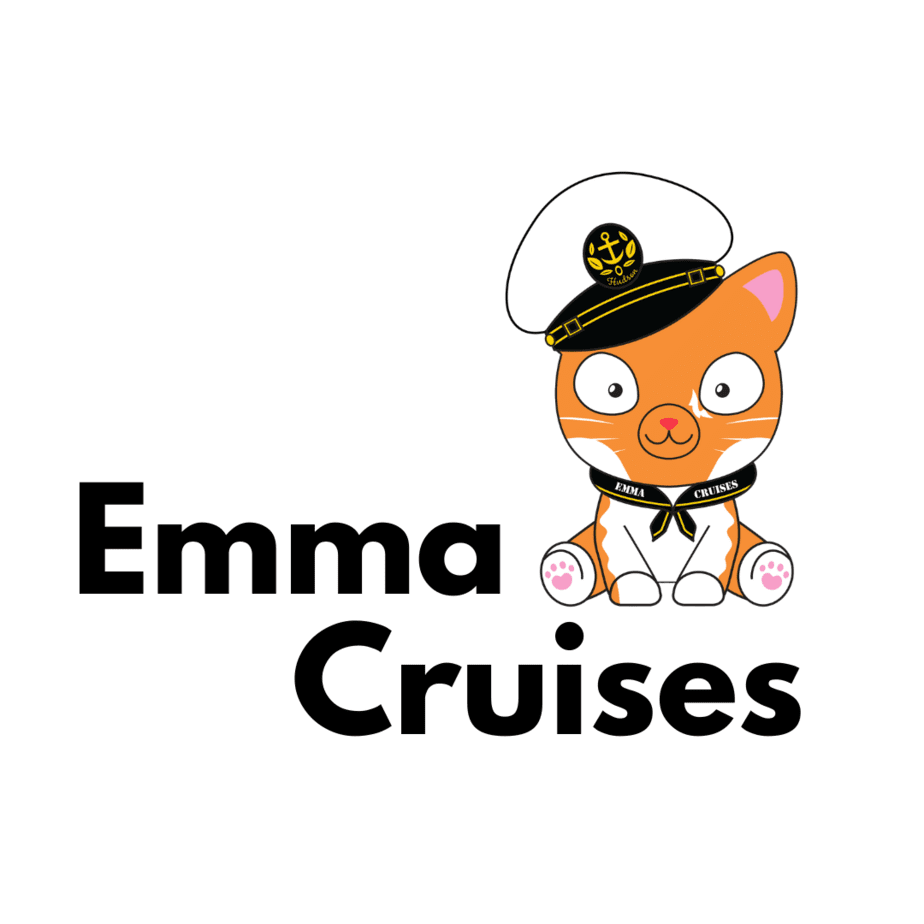Looking at some of the stunning modern cruise ships of today, it is hard to believe that the idea of going on a ship for pleasure was an alien concept until the early 20th century.
Cruising was very much a pastime for wealthy passengers in the early days.
Cruising was a luxury experience, affordable only to well-to-do people. They would meet, drink, eat gourmet dishes, and travel to exciting new destinations.
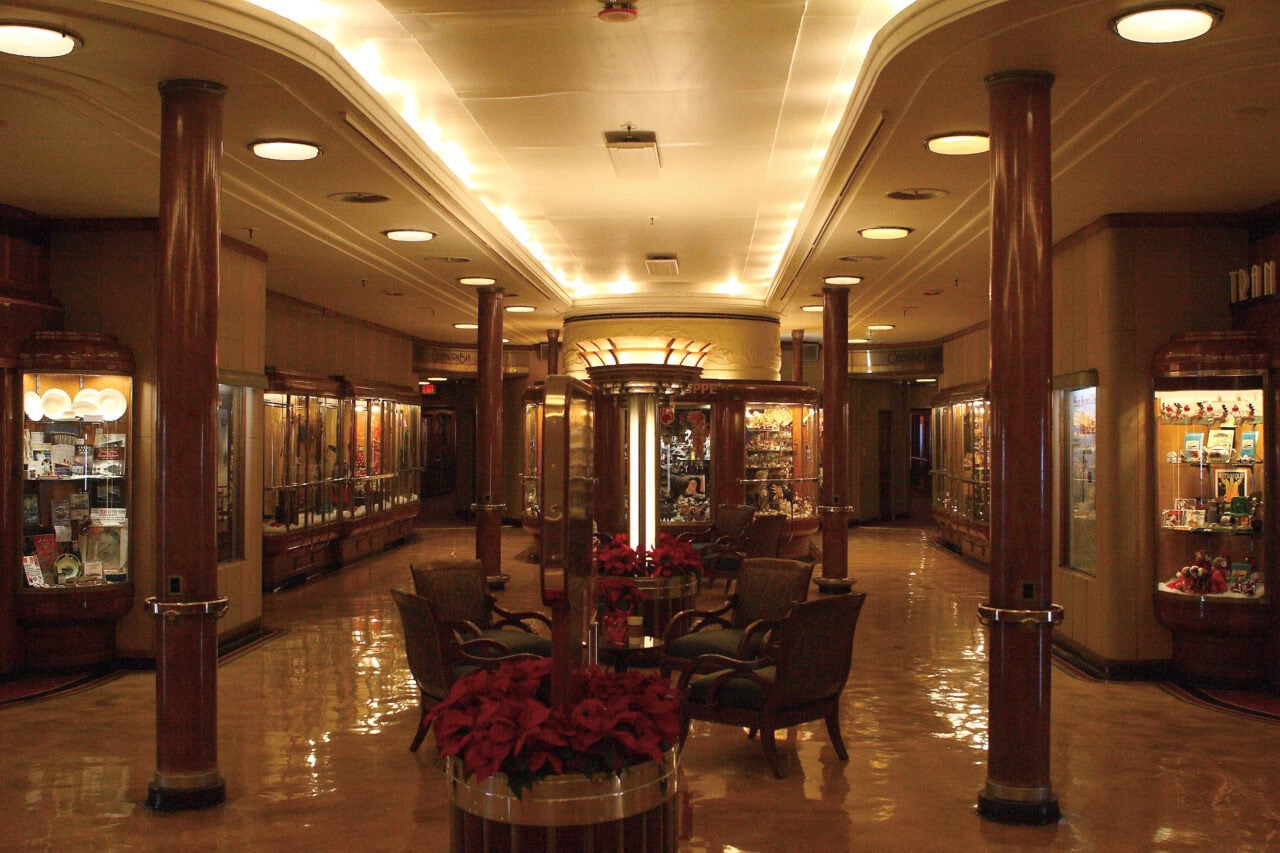
Ships had opulent fixtures and fittings, ballrooms and lavish dining.
Over the decades, cruising has evolved from an exclusive pastime for the rich to being an accessible holiday option for many.
But how did this happen, and what did the cruising industry look like before the 21st century?
In this article, we look at the factors that made cruising accessible to the mass market.
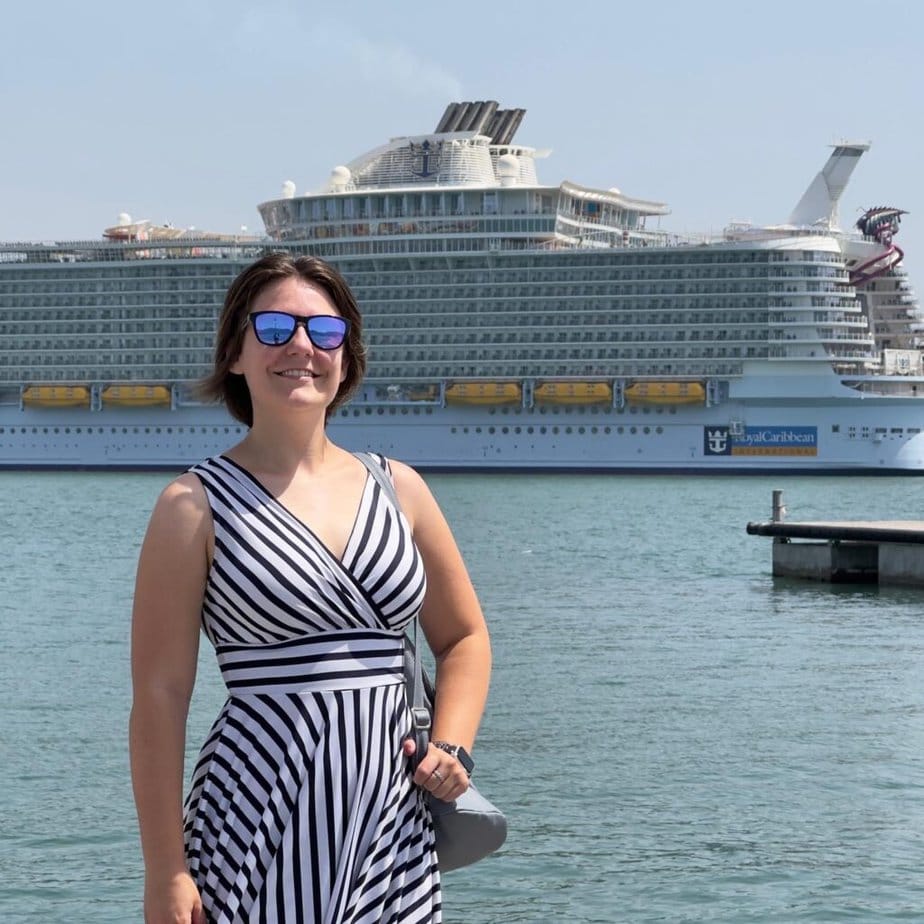
The History Of Passenger Travel By Ship
Ships were originally a way of just getting passengers from point A to point B.
Before the age of the jet airplane, crossing the Atlantic was only possible by boat, and it usually took a week.
Many journeys were one way for many. Immigration became possible allowing people to start new lives in faraway countries.
Journeys were made with a purpose, not as a leisure activity.
The Early Days Of Passenger Ships
In 1881, P&O decided to convert their liner “Ceylon” into what is regarded as the first cruise ship.
She embarked on a round-the-world cruise from Liverpool. This was the start of cruising as we know it today.
In the early 20th century, Cunard and White Star Lines became significant players in the shipping world, and they launched larger and more luxurious ships.

Instead of ship journeys just being a functional way of getting from A to B, sailings were also being marketed as pleasure cruises.
The first cruise ship to have a swimming pool onboard was the White Star Line’s Adriatic in 1906. The swimming pool was located on a lower deck and was only available to first-class passengers.
Titanic and her sister ships also had swimming pools for their first-class passengers. Find out more about that here:
Inside Titanic’s Swimming Pool – Real Photos, Restrictions, and Design
In the early days of cruising, ships were divided into classes. First-class passengers had accommodations and facilities were well out of reach of poorer, working-class (third-class or steerage) passengers.
By today’s standards, the cost of RMS Titanic’s First-Class Parlour Suite would amount to £40,100 – or roughly $49,680. And that was not a return ticket.
World of Cruising
In the height of peak travelling season, this cost would spiral to £870 (£84,600), as was so often paid aboard RMS Olympic, until her retirement in 1935. The scary part? That eye-watering fee didn’t always include your meals.
There was a vast difference in opulence between the accommodation available for different class passengers.
Back then, passengers in steerage were even expected to bring their own food – and they would be sailing to start a new life in a new country – not for the fun of it!
The Early Days Of Cruising
By the early 1900s, the Hamburg America Line created the first purpose-built pleasure cruise ship. It was an exclusive affair, offering entirely first-class cabins.
The competitors, P&O, Cunard, and White Star Line, then also began offering more pleasure cruises to a range of destinations.
In 1912, White Star Lines new ship, Titanic, sank after hitting an iceberg during her maiden voyage to New York.
The Titanic’s sinking was a major financial loss for the White Star Line, which eventually merged with Cunard to save the business.
Two World Wars disrupted the shipping industry during the first half of the twentieth century. It wasn’t a great time for shipping companies!


Many ships were being commandeered into war service – often as hospital ships, merchant ships or troop carriers.
Golden Age Of Cruising
Once the Second World War was over, things improved for shipping companies.
During the second half of the twentieth century, cruising came into its own. The 1950s saw what many people call “the Golden Age of Cruising.”
Cruising was still only for the elite – only wealthy passengers could afford it, and the costs were beyond the reach of most people.
Cunard’s ships were advertised as “floating palaces” with design features similar to The Ritz.
Cruises became social events – filled with games, drinking, dancing, and glamorous guests.
Transatlantic Crossings, and other voyages on cruise ships, became increasingly popular in the 1950s, a time now nostalgically referred to as the Golden Age of cruising. During this period such voyages became prestigious social events complete with dancing, drinking, and plenty of famous faces. In 1950, Cunard even hosted an all-American star voyage, with celebrities like Judy Garland, Frank Sinatra, and Elizabeth Taylor on board.
Cunard
Some Of The Most Famous Ocean Liners Of The Time:
- RMS Queen Mary – Launched in 1934, was one of the fastest passenger ships at sea.
- She held the Blue Riband speed record for crossing the Atlantic from 1936 to 1937 and from 1938 to 1952.
- The Queen Mary had five dining areas, two swimming pools, a grand ballroom, a squash court, a hospital, a library, and beauty salons.
- The Queen Mary rolled from side to side much more than expected when sailing. There were no handrails for passengers to grab onto in the corridors. They had simply not been thought necessary!
- After a few voyages, workmen travelled on the ship to fit handrails to the corridors and to bolt down heavy furniture.
- The rolling problem was finally cured in 1956 when stabilisers were fitted to the ship.
- SS United States – On July 3rd, 1952, the SS United States set sail on her maiden voyage, timed to coincide with national 4th July celebrations.
- She was the fastest Ocean Liner of all time. Thanks to her reduced weight and powerful engines, the SS United States could go almost as fast in reverse as the Titanic could go forward!
- On her maiden voyage, the SS United States shattered the trans-Atlantic speed record in both directions. She had a top speed of 38.32 knots or 44 miles per hour.
- She became known as “America’s Flagship.” Throughout the 1950s, many people from around the world booked accommodation on the world’s fastest ship.
- Familiar names of the day, including Bob Hope, Princess Grace of Monaco, Salvadore Dali, Rita Hayworth, Harry Truman, the Duke and Duchess of Windsor, and Duke Ellington all sailed on her.
- RMS Queen Elizabeth – Was launched by Cunard on 27 September 1938.
- Her design improved on that of Cunard’s Queen Mary, resulting in a ship 12 feet longer and several thousand tons heavier.
- This made her the largest passenger liner ever built for a record 56 years.
- Built during the wartime years, she entered service in March 1940.
- She was requisitioned for military service in 1940 and painted military grey. The ship was refurbished into a troop carrier and transported more than 750,000 troops.
- She did not make her first commercial voyage as an ocean liner until October 1946.
- RMS Caronia – Launched in October 1947, she served with Cunard for twenty years.
- She was nicknamed the “Green Goddess” because of her light green hull livery.
- She was one of the first “dual-purpose” ships, built both for second-class transatlantic crossings and first-class cruising.
- Famous passengers onboard included Judy Garland, Elizabeth Taylor and Oliver Hardy (From Laurel and Hardy)
Queen Mary has survived as a floating hotel in Long Beach, California. I was lucky enough to stay on her – long before I started my Cruise Blog.
She is a fascinating ship. Find out how she compared to the early Ocean Liner Titanic here:
Titanic vs The Queen Mary 2 – Size, Power, and Speed Comparison
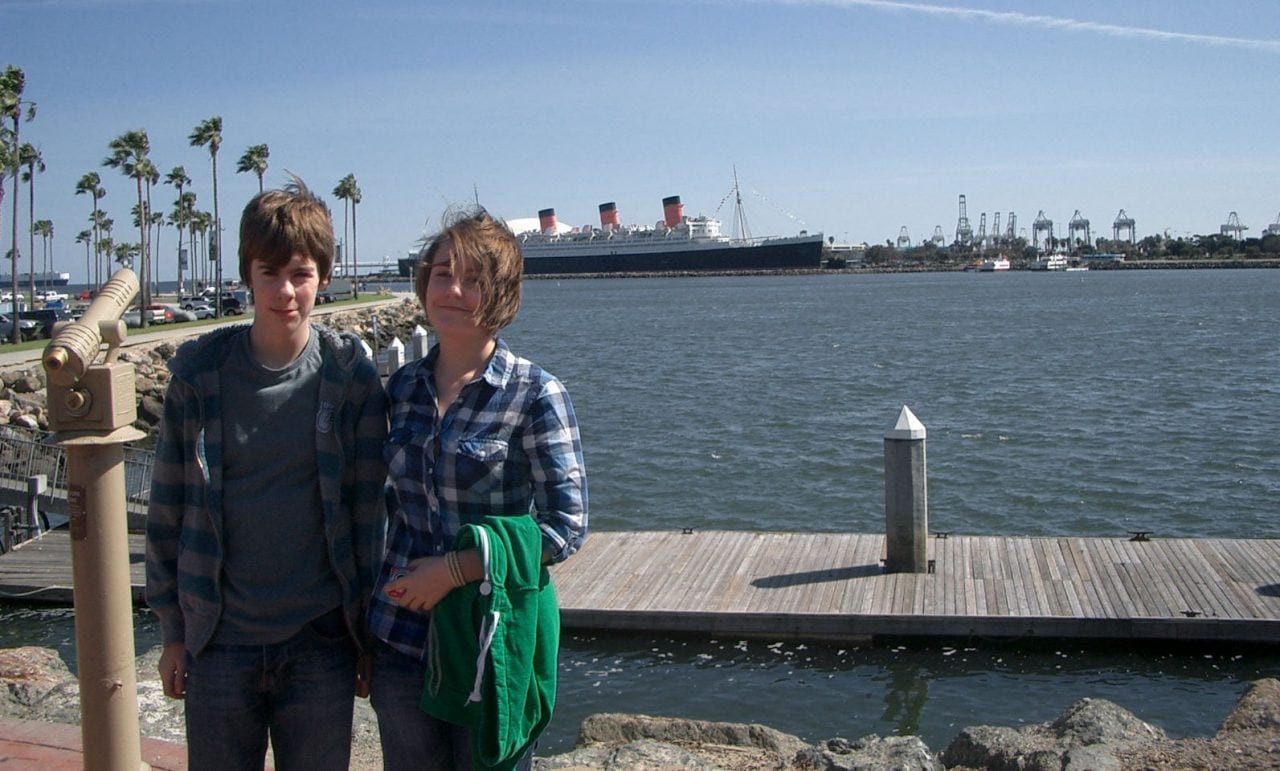
New Cruise Lines Enter The Market
During the second half of the 20th century, many modern cruise lines were founded. These included:
- Princess Cruises – founded in 1965 – sailing a single cruise ship to Mexico
- Norwegian Cruise Line – Founded in 1966 – Originally called Norwegian Caribbean Line, their first ship “Sunward” was built as a car ferry!
- Royal Caribbean – founded in 1968 in Norway when three Norwegian shipping companies joined forces.
- MSC – founded in 1970 – The Mediterranean Shipping Company began the cruising arm of the business in 1988 in Naples, Italy.
- It is the world’s largest privately owned cruise company.
- Carnival – founded in 1972 – On the maiden voyage of Carnival’s first ship, the TSS Mardi Gras, the ship ran aground on a sandbar outside the Port of Miami!
- Celebrity Cruises – founded in 1988 – Celebrity Cruises was originally founded by the Greece-based Chandris Group.
- They merged with Royal Caribbean Cruise Line in 1997.
- Celebrity’s logo is an “Χ” – seen on the funnel of all Celebrity ships.
- It is the Greek letter chi – for “Chandris”.
Ship Building Advancements and Changing Demands
Advancements in shipbuilding after the Second World War allowed the newly formed cruise industry to build larger, more efficient vessels.
Post-war, people had disposable income, which created a demand for more affordable leisure travel. Cruising very much fitted the bill for an affordable way to travel.
With the rise in popularity of commercial air travel in the 1960s, transatlantic liners became obsolete. This prompted cruise lines to rethink their market.
Have a look at some of the early marketing material and advertisements from Norwegian Cruise Lines below – they are well worth a look!
Norwegian Cruise Line History (Including Interesting Brochures from the 1960s)
A Marketing Shift – Selling Cruises to the Masses
By the 1960s, cruise lines began promoting cruises as holidays for everyone. They focused on relaxation, fun, and exciting new destinations.
Popular TV programmes like The Love Boat introduced cruising to the masses, who may not have considered it a holiday option before.
Celebrity endorsements for cruising made the new cruise industry seem trendy and appealing.
The TV programme “Love Boat” was set on a Princess Cruises ship. The show ran from 1977 to 1990. It is believed to have contributed to the success and popularisation of cruising.
Package deals on cruises were introduced, and the all-inclusive aspect of cruising made it appealing to those who were holidaying on a budget.
Cruising was no longer just for the rich. It had become all about pleasure cruising for the mass markets.
Advances In Ship Design and Onboard Amenities
Many changes and innovations made cruising more popular and accessible to the mass market.
- Bigger Ships were being built – with more cabins.
- Larger, more efficient ships allow cruise lines to increase capacity. This, in turn, lowers costs per passenger, making the cruise fare more affordable for many.
- Onboard Entertainment
- Modern large ships have many pools, theatres, kids’ clubs, and dining options that attract families and young travellers alike. Ships are no longer the domain of the social elite.
- Innovations in Technology
- Technological advances in shipbuilding have helped to lower cruise lines’ operating costs. This has translated into affordable fares for passengers.
Families and Younger Travellers
Cruise lines wanted to appeal to the family market, so they updated their fleets and pricing to attract a younger passenger demographic.
- Family-Friendly Cruises
- Cruise Lines introduced family amenities – like kids’ clubs, family cabins, reduced fares for children etc. This has helped make cruises appealing to families of all ages.
- They also Target Millennials and Gen Z
- Cruises cater to younger travellers, and they offer many Instagram-worthy features, such as zip lines, rock climbing walls, water parks, and Go-Kart tracks.
- Lots of Flexible Options available
- You can book a short or longer itinerary and pay via accessible payment plans, which are available and designed to attract a broader market.
- Flexible dining options onboard mean that dining is no longer the rigid, stuffy affair it once was!
I recently sailed on a far more traditional cruise line designed to appeal to an older passenger demographic. Formality and set dining times were the order of the day! Find out about that here:
The Impact of Budget Cruising on the Industry
The cruise industry has changed over the years to accommodate budget cruisers. Some of these changes include:
- Rise of Mega Ships
- The popularity of budget cruising has led to the creation of massive ships that dominate the industry today.
- Some of the new “mega ships” can hold up to 7,600 passengers. This means that the cost per cabin is reduced, food costs are reduced when you buy in bulk, and staff numbers can also be reduced -this is known as “economies of scale.”
- Global Expansion
- Affordable cruising has expanded to new markets worldwide
- It is now easy to cruise to Asia or the Emirates – places you may not have thought of cruising to in the past.
- More competition
- Budget cruising has forced other travel sectors – like hotels and airlines – to become more competitive to keep up with the ever expanding cruise industry.
- Both now offer many budget-friendly options that allow people to travel more.
Cruising’s accessibility has made it a cultural phenomenon. It appeals to people of all nationalities and social backgrounds.
Some would say that the days of segregated ships are gone – but with the rise of “ship within a ship” concepts to keep wealthy passengers separated – some would say that there is still a class system onboard some ships.
But one thing is for certain – you definitely don’t have to bring your own food along now!
I recently stayed in the premium area of an MSC ship – known as the “Yacht Club.” This exclusive area onboard bigger cruise ships has private access and many perks (including the fact that I had my own Butler!)
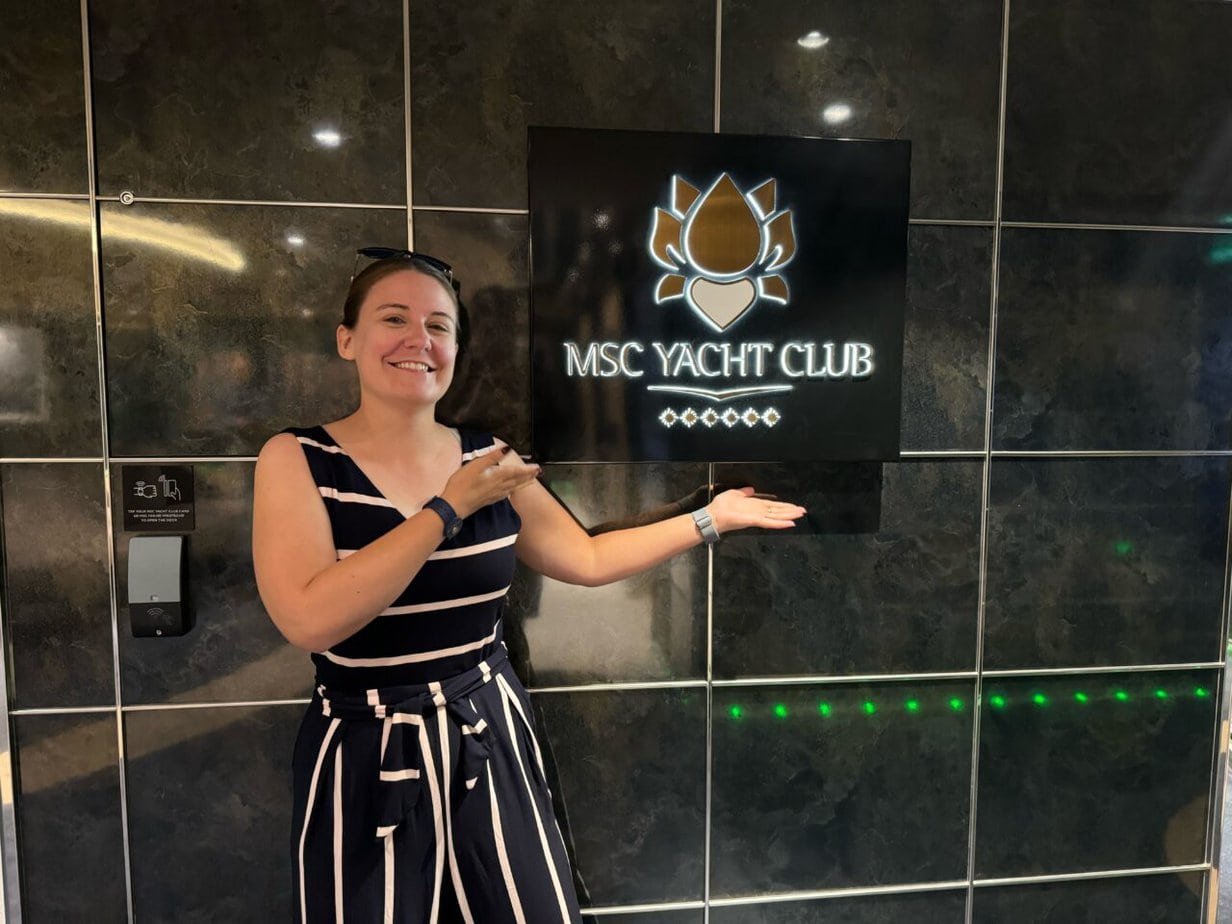
Only five percent of the ship’s passengers are able to access the exclusive Yacht Club areas.
Yacht Club cabins cost far more than standard cruise fares, meaning they are only accessible to some.
Find out all about that amazing cruise here:
Before You Go
Cruise ship design has changed drastically over the years. Find out why so few ships have my favourite design feature in the article below:
My Favourite Cruise Ship Design Feature Isn’t Being Built Anymore – Here’s Why
Ever wondered why ships intermittently go into dry docks? Find out here:
What are Dry Docks and Why do Cruise Ships Need Them?

Free Insiders Cruise Line Guide
Ever wondered how the mainstream cruise lines compare? Cruise lines won’t tell you this, but I will.
This FREE guide shows you everything you need to know to find your perfect cruise line.
Whenever I take a cruise I order a print of my trip. It uses the real satellite data from the cruise and is always a great conversation starter!
I'm building an impressive collection...
Code EMMACRUISES will get you 10% off
